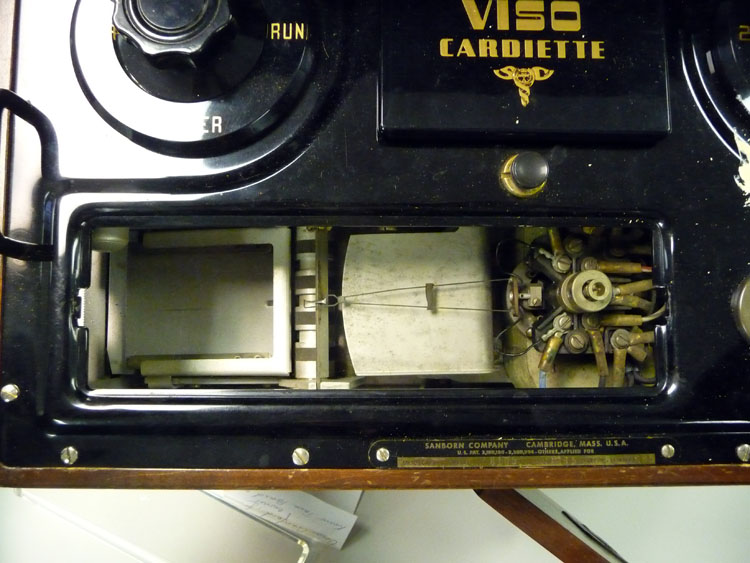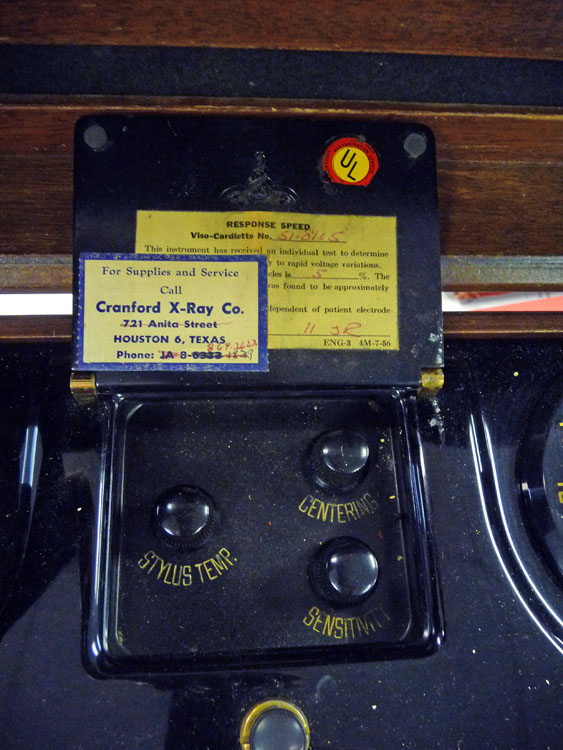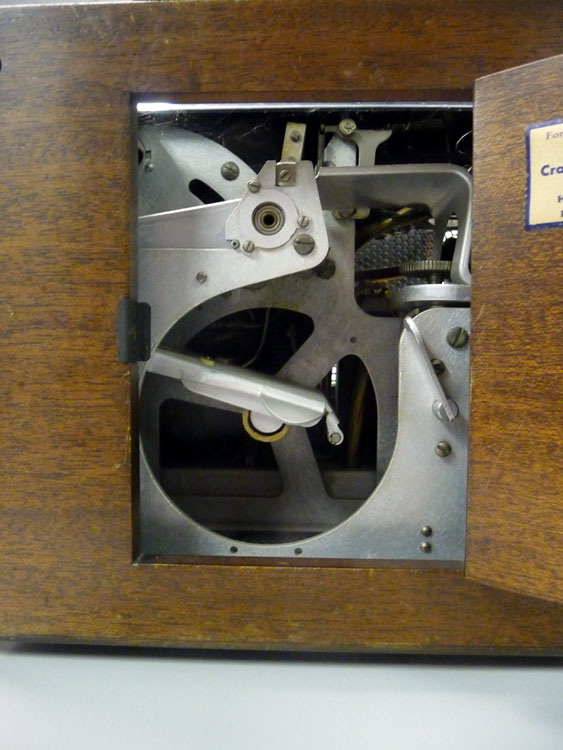by Alethea Drexler
Archives assistant
Phil Montgomery is setting up a display of vintage medical machines today in the main library. I thought I’d share one of them with our blog readers. If you’re in the library, I hope you’ll go see it in person.
This is the Sanborn Viso-Cardiette, model 51, a portable (“portable” as long as you want an upper-body workout. It’s all-metal and very heavy) electrocardiograph, which is a machine that creates a “print-out” of a heartbeat. For a brief history of electrocardiography, go here.
(Click on the pictures for larger versions.)
Its manufacturing company was founded by Frank Sanborn in 1917 and was bought out by Hewlett-Packard in 1961.

I found dozens of these on online sales and auction sites, so they must have been widely used.
The control panel is beautiful: Shiny black with gold lettering (ignore the white blotch near the right-hand dial. Something was spilled on it and we haven’t yet figured out how to clean it safely). I couldn’t find a way to photograph it effectively, but the numbers on the two large dials are actually painted on black backgrounds and then covered by a layer of Lucite, or some other clear material, to make them look three-dimensional. It has everything except tail fins.

There is a small tray in the lid that drops down and holds the ECG leads and other small accessories. The coiled things on the far right are rubber straps which were used to hold the leads in place.

Here is a closer look at the stylus. This is the “needle” that drew the ECG on the paper. Styluses also draw lines for lie detectors and seismographs.

These are the controls for the stylus (this is under the Viso nameplate between the two dials), which allow the user to make sure the stylus is centered on the paper and is the correct temperature and pressure to make a good-quality image.
There are lots of address labels inside this particular machine. Some of them predate ZIP codes, which were introduced in 1963, and seven-digit phone numbers, but some don’t, which makes me wonder if this was re-sold as a used instrument at least once in its life.

If you open the door in the side of the case, you can see where to insert the roll of paper. You can also see more address labels.

The earliest reliable reference we found to this model of ECG was in a 1950 issue of the Journal of the American Medical Association. Journal references ran through the 1950’s and into the mid-1960’s, and they were used on both people and animals (which doesn’t surprise me: The EGC we used when I worked for the veterinarian was a 1970’s model acquired secondhand from a pediatrician).
In the process of searching for more information, we ran across this advertisement from the August 6, 1954 issue of “Science” magazine. It features the model 51 at the top right corner. The fourth instrument from the top is a Sanborn Twin-Beam Cardiette oscilloscope, which was used to amplify heart sounds; the McGovern archive has one of those, too.

The Viso-Cardiette in real life:
1) PubMed, reference only: Journal of the American Medical Association, 1950 Aug 26;143(17):1487. “SANBORN viso-cardiette, model 51, accepted.” Here is a .pdf version of the page in question, with a picture of the Cardiette.
2) Wiley Online Library, abstract: Journal of Pharmaceutical Sciences Volume 51, Issue 4, pages 372–374, April 1962. “Sensitization of the pigeon to epinephrine-induced ventricular fibrillation by a substituted propriophenone.”
3) Circ.ahajournals.org via HAM-TMC Library: Circulation, Volume XX, November 1959. “Electrocardiogram of the Healthy Adult Negro.” (.pdf)
4) Journal of Nutrition via HAM-TMC Library: Journal of Nutrition, Volume 82, 1964. “Hypertension and Vascular Abnormalities in Starved-Refed Swine.” (.pdf)
5) Another model 51 owned by the Oregon Health & Science University. Actually, the OHSU Historical Collections and Archives keeps a very nice medical history blog.